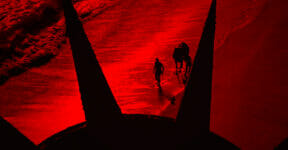An apocalypse in science fiction young adult novels and films never really is the end of the world. There always seems to be life after a doomsday, albeit life reduced to ruins. To give you an idea of what an obliteration might look like, here are some post-apocalyptic art and images to send your imagination into overdrive.
Sinking Liberty

A wrecked Statue of Liberty has become a staple in the depiction of a post-apocalyptic United States. The original 1968 Planet of the Apes may have been the first film to feature a broken Lady Liberty, but the perceived sense of decimation is no match to the doomsday-feel you get from the film poster of The Day After Tomorrow.
Life after People

When it is finally time for an apocalypse to wipe out humanity, the Earth will still be here. The planet doesn’t really care whether or not the human race exists to begin with. Everything that humanity leaves behind becomes a playground for wild vegetation and animals. Water, air, fire, and the elements soon take over.
Doomsday in Japan
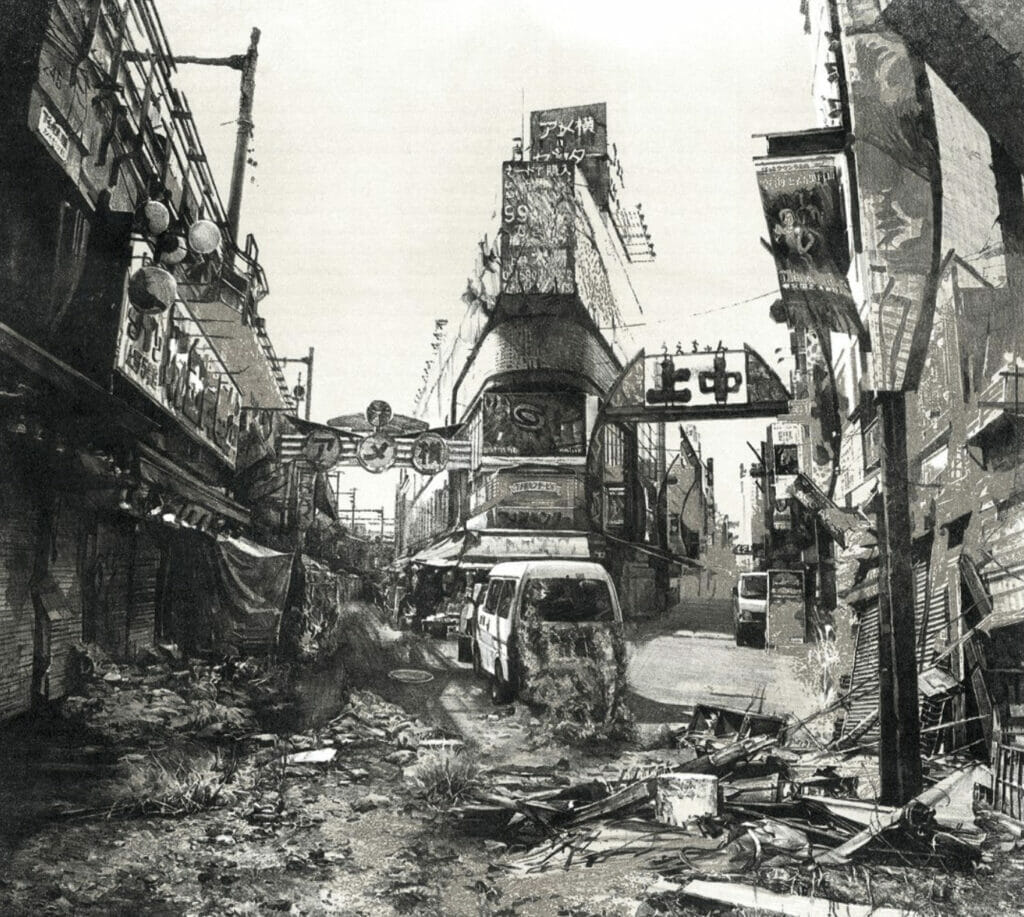
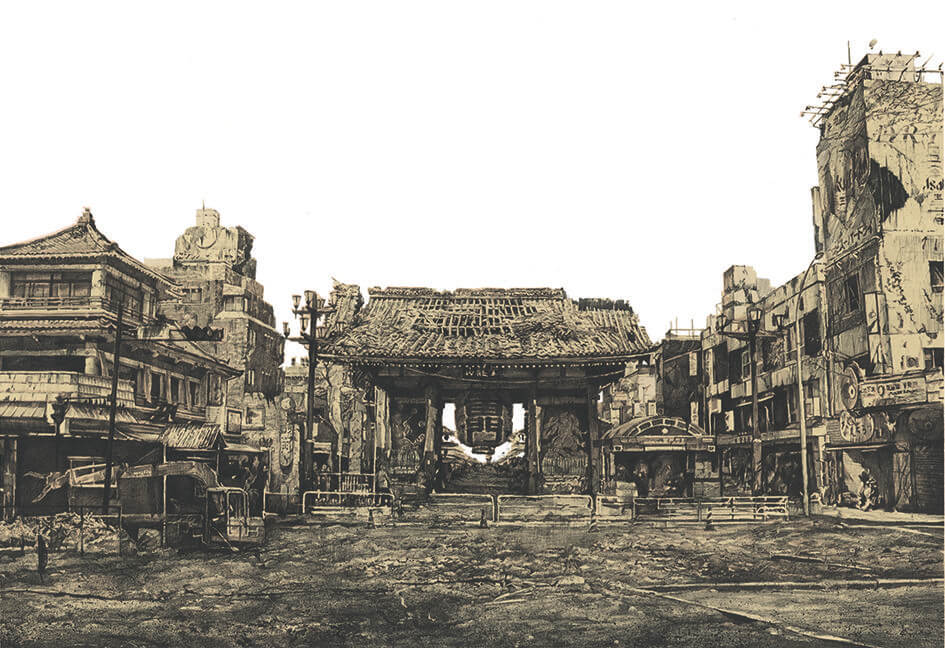
Japanese photographer Hisaharu Motada gives some ideas of what Tokyo might become when the capital is no longer inhabited by people. He offers a glimpse of post-apocalyptic landscapes through images of crumbling buildings, overgrown vegetation, and deserted streets. His version of end-of-days Tokyo would make for an excellent horror film scene.
The City
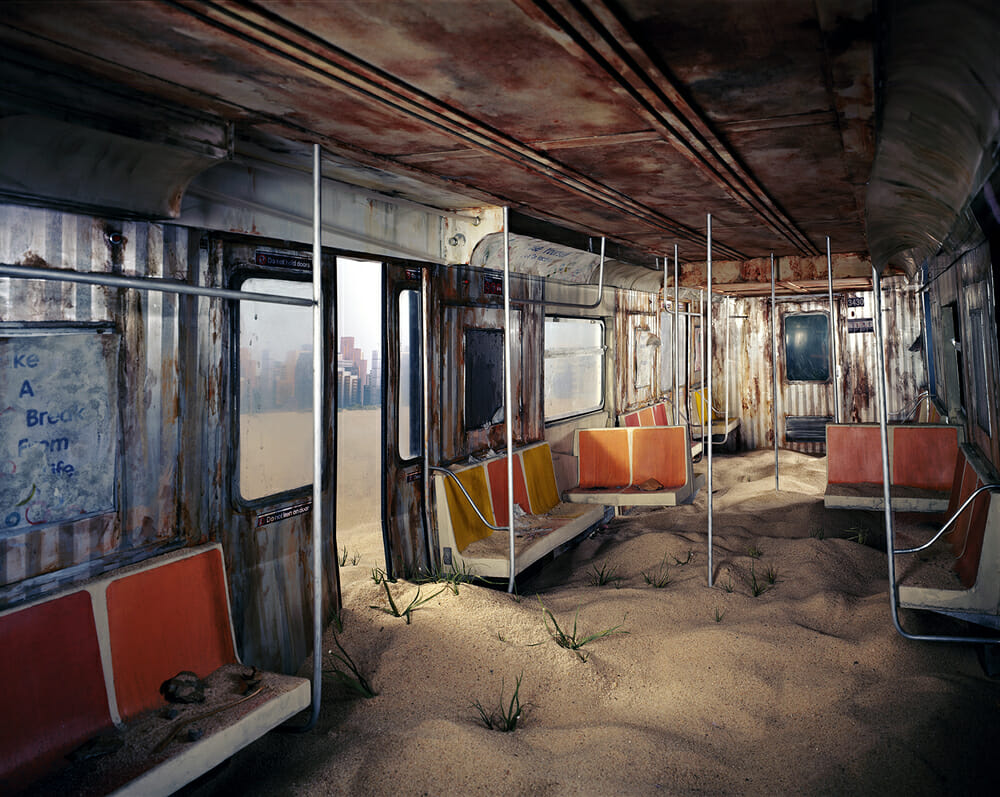
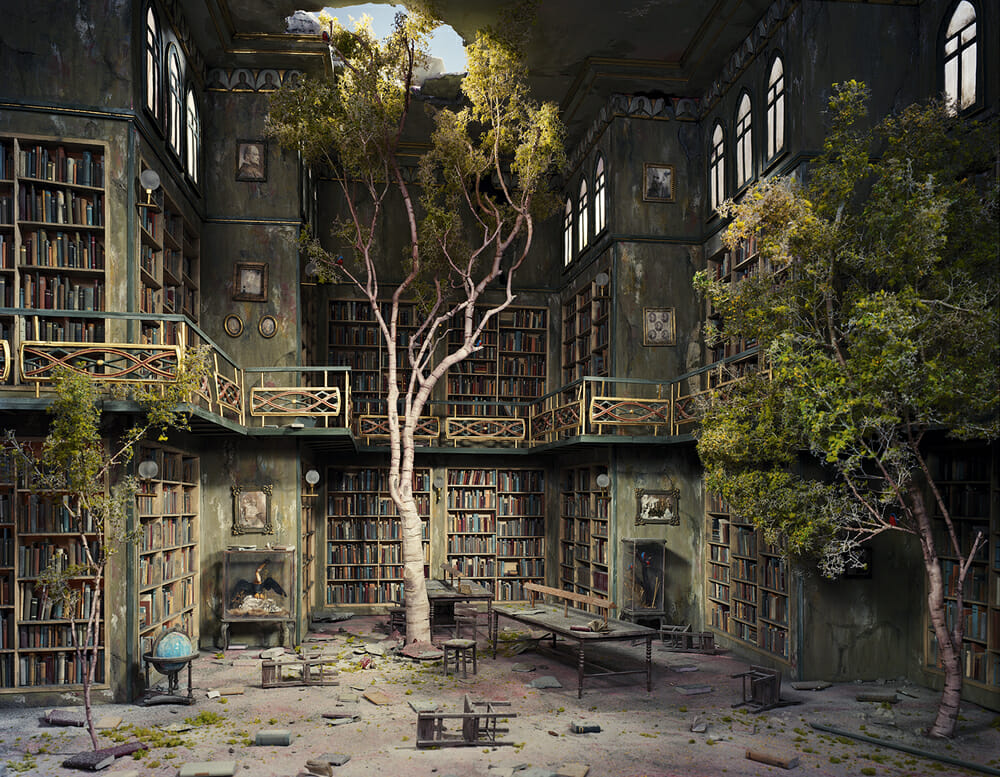
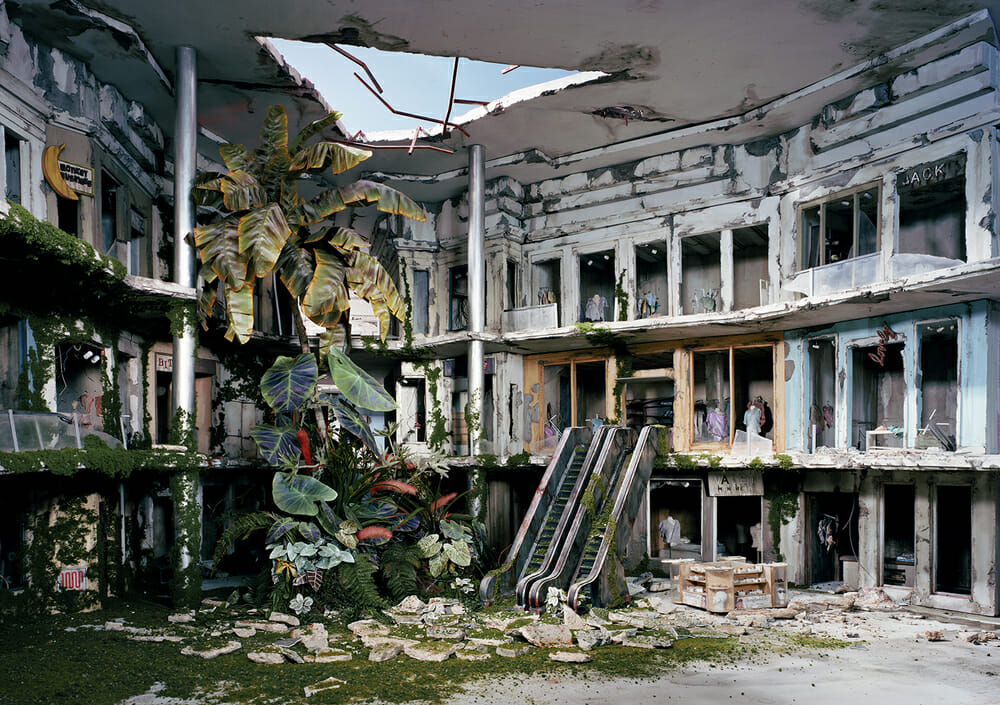
New York artists Kathleen Gerber and Lori Nix choose dioramas instead of CGI to express their visions of a post-apocalyptic world. In their series of imagery compiled in The City, the artists depict how familiar places and things turn into depressive remnants of days gone by. In one of the scenes, a subway is filled with piles of dirt and sand; in another, a library has been taken over by shrubs and trees.
Dry Thames
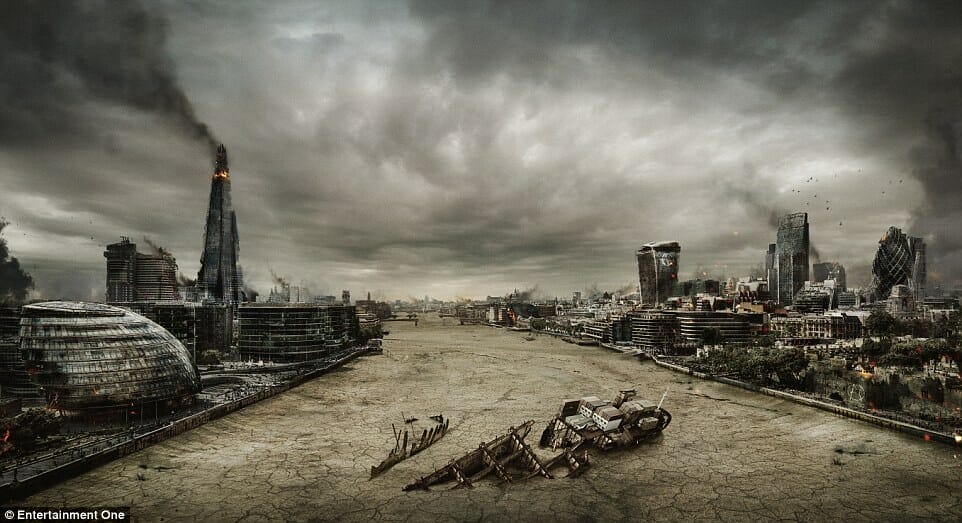
In this post-apocalyptic version of London, the River Thames has run dry. Water is gone without a trace. There isn’t even any sign of mud at the bottom of the mighty river. The sky is almost as dark as the black smoke coming from the burning Shard. Meanwhile on the South Bank, signs of life are completely absent.
Toronto in Ruins
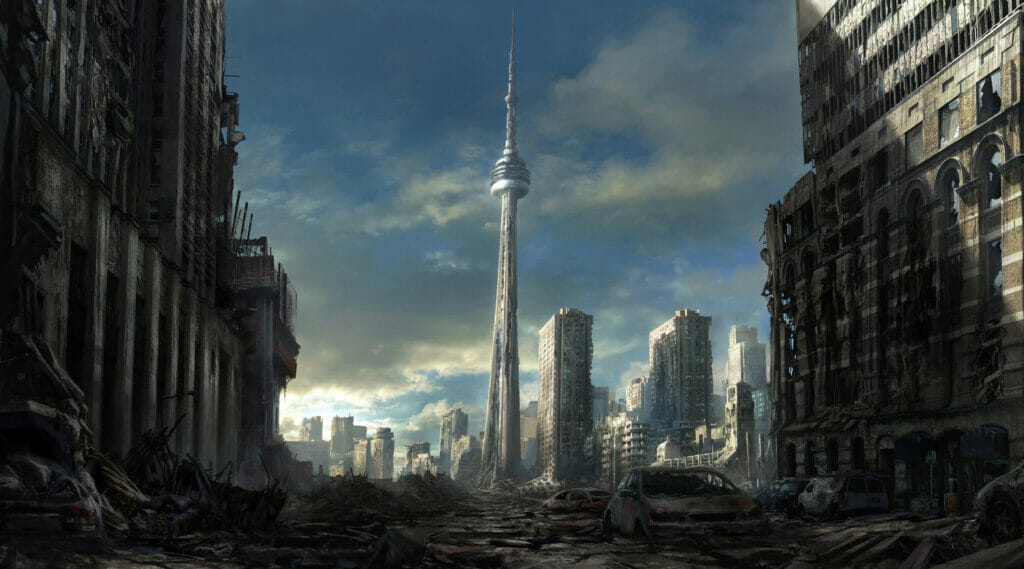
Concept artist Jonas De Ro utilizes all the right ingredients to produce a bleak vision of post-apocalyptic Toronto. Recognizable features of the city remain visible, including the popular landmark CN Tower. However, they are all depicted in a state of oblivion. The main objective is to trigger an unsettling feeling in the audience.
Waterless World
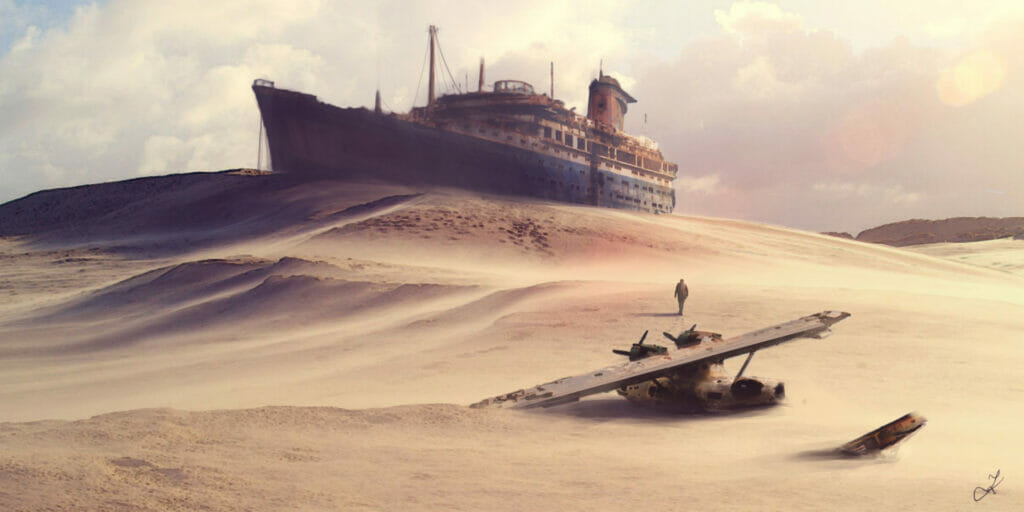
Many things can start an apocalypse, from heat waves to a biblical flood, from AI insurgence to a virus outbreak. Disappearing water is often used as a backstory in many movies to highlight human dependence on it and the vulnerability its absence causes the natural world. Without sea and water, every grandeur cruise ship is rendered pointless.
Drowned City
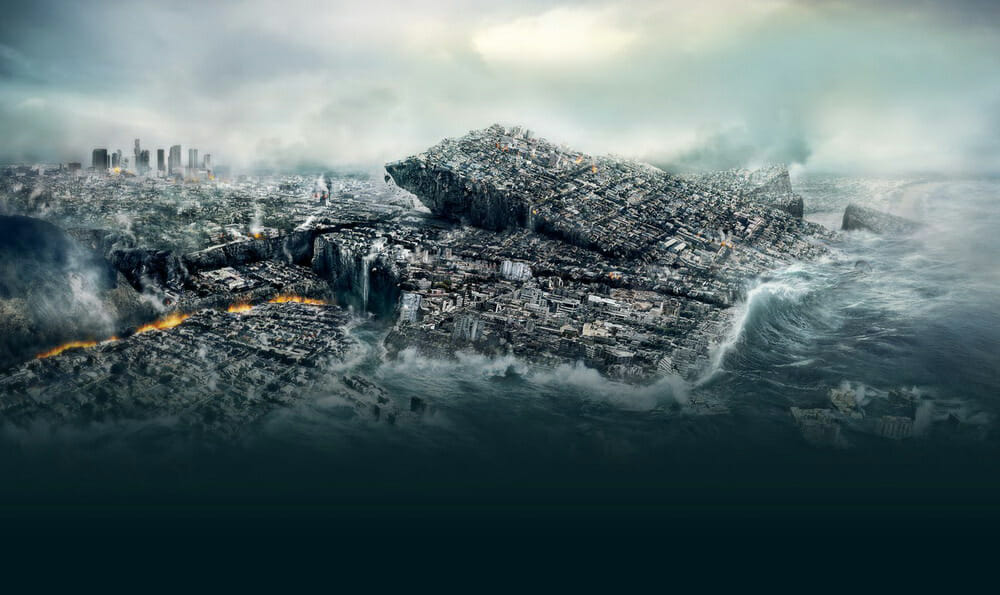
Either no water or too much water can be equally devastating. The still image from the film 2012, in which human race is on the brink of extinction due to a sequence of catastrophic disasters, gives a depiction of a sinking Los Angeles. While the film itself cannot be considered a post-apocalyptic feature, the image can stand-alone as one to display the ultimate power of nature.
AFTER
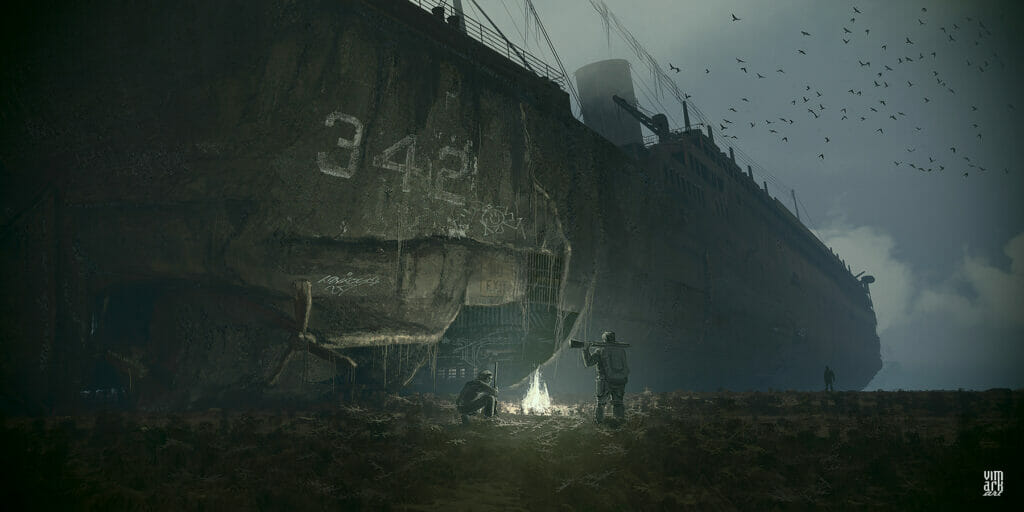
Max Mitenkov out of Behance presents a few images in his A.F.T.E.R series to showcase how he imagines the world after a global-scale destruction; it could be another world war or a natural disaster. Some people survived the initial impact, but now they have to live in desolate cities among the ruined landscape without much usable resource.
Reclaimed Stations
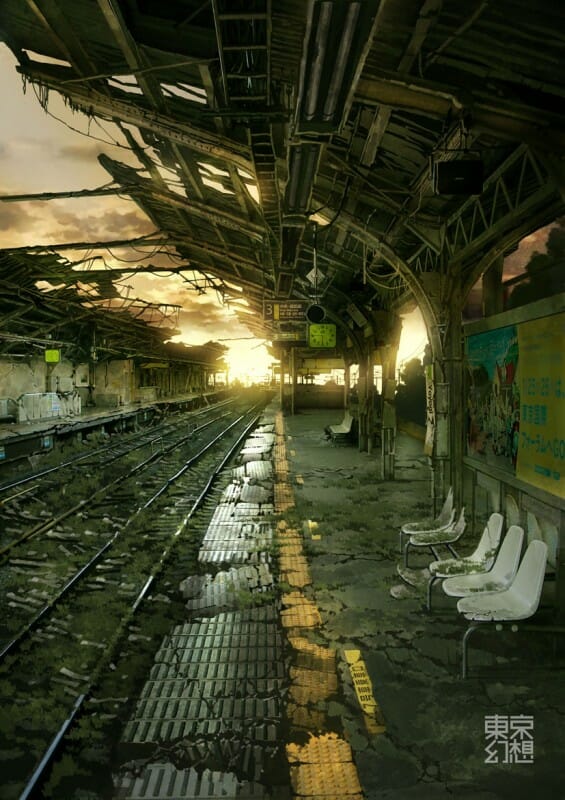
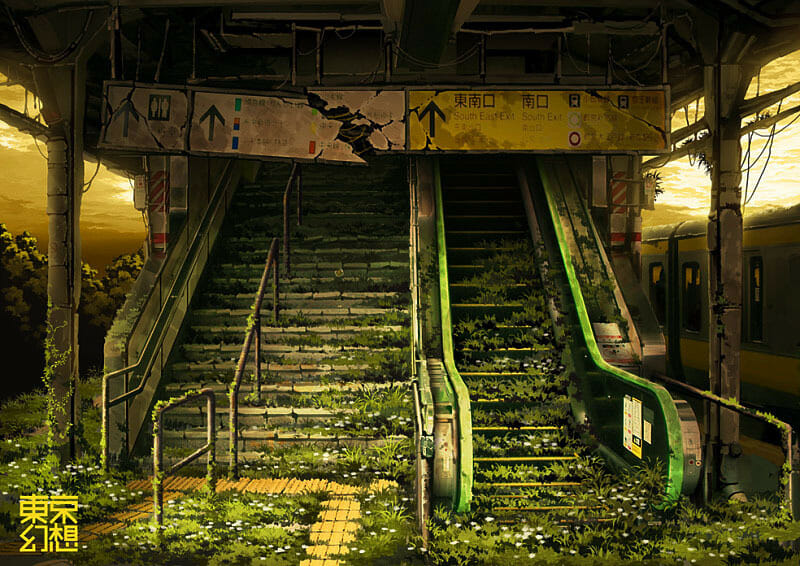
Two more entries of post-apocalyptic Japan come from Tokyo Genso. It is interesting to see the fictionalized versions of the city resemble the actual conditions today. Although the images give only two major stations – the Shinjuku and Yoyogi, both in Shibuya – in a state of abandonment most likely because the city’s population has disappeared, many of present-day backstreets of Japan are already filled with neglected old buildings slowly being reclaimed by Mother Nature.
Mona Lisa
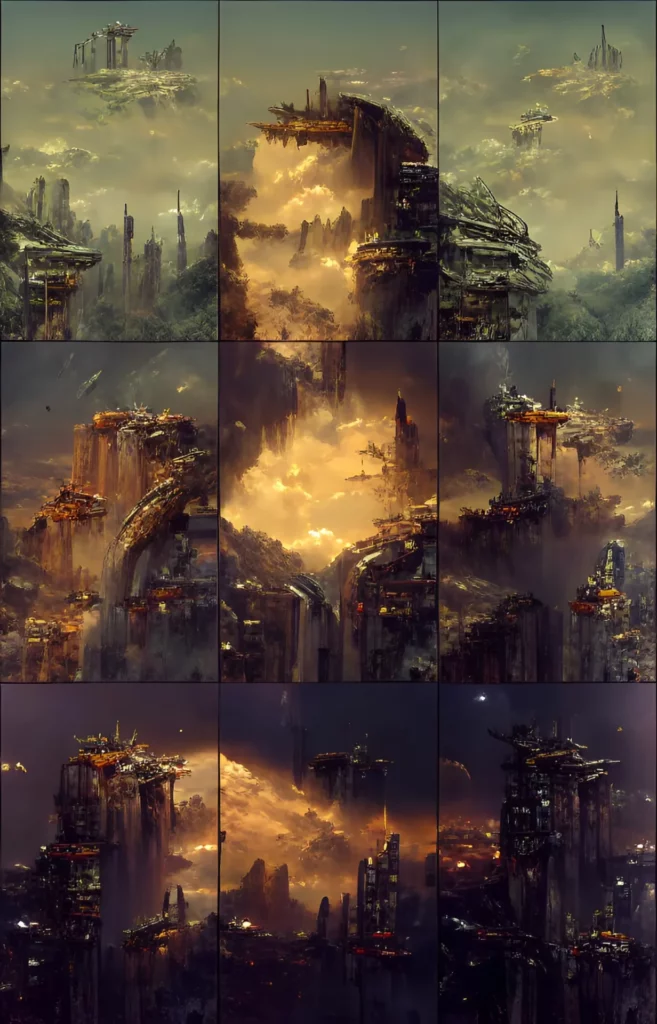
AI art generator can also produce some really impressive post-apocalyptic artworks as well. Digital creative TDRAW lets his computer do all the improvisations and in return the machine comes up with nine images of desolate civilizations; when arranged in the right position, all nine canvasses form the silhouette of Mona Lisa.
Manchester’s Afterlife
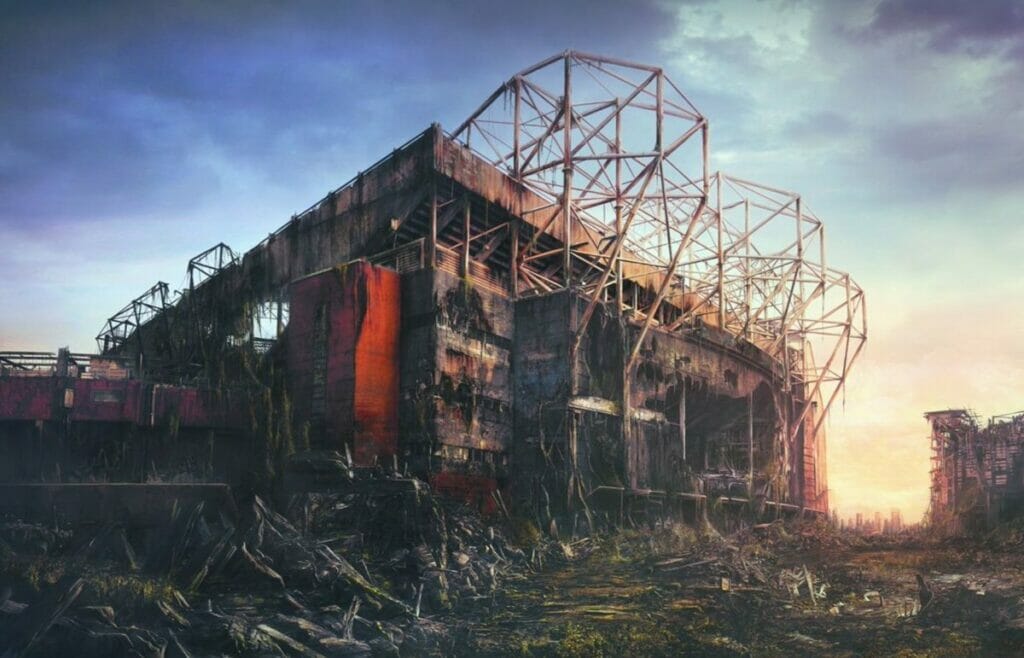
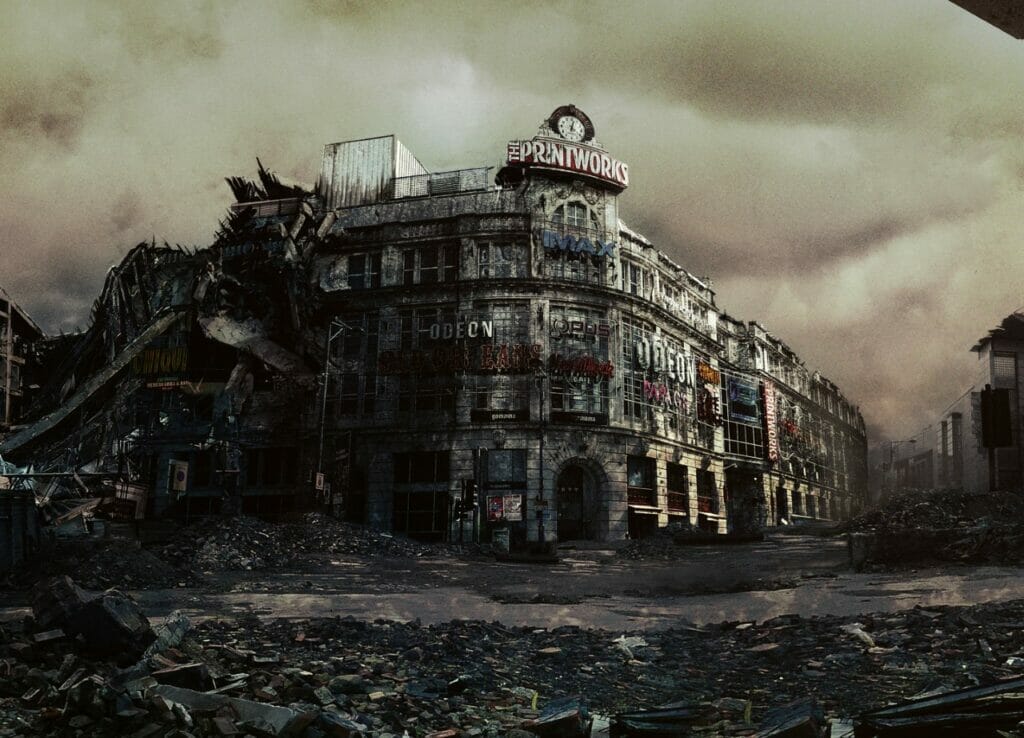
James Chadderton is a mixed-media artist whose creations mostly revolve around post-apocalyptic theme. Using famous landmarks of England, he delivers macabre scenes of Old Trafford and The Printworks. The sense of nightmare is unmistakable thanks to his smart method in blending fiction and reality in every piece.
Urban Jungle

Josh Keyes, a Portland-based artist, has a unique idea of the post-apocalyptic situation. Instead of total destruction to everything, only the humans are gone. The city streets are turning into a literal urban forest where animals can roam free. The disappearance of people has made way for the wildlife to wander further from the woods.
Fantastical Whale

When the ice melts and the sea rises to a disastrous level, human civilizations are drowned. Marine animals now rule the water world. The whale is fantastically massive indeed, but somehow the image looks realistic enough to trigger a chilling sensation in the back of your mind.
Zero Dawn
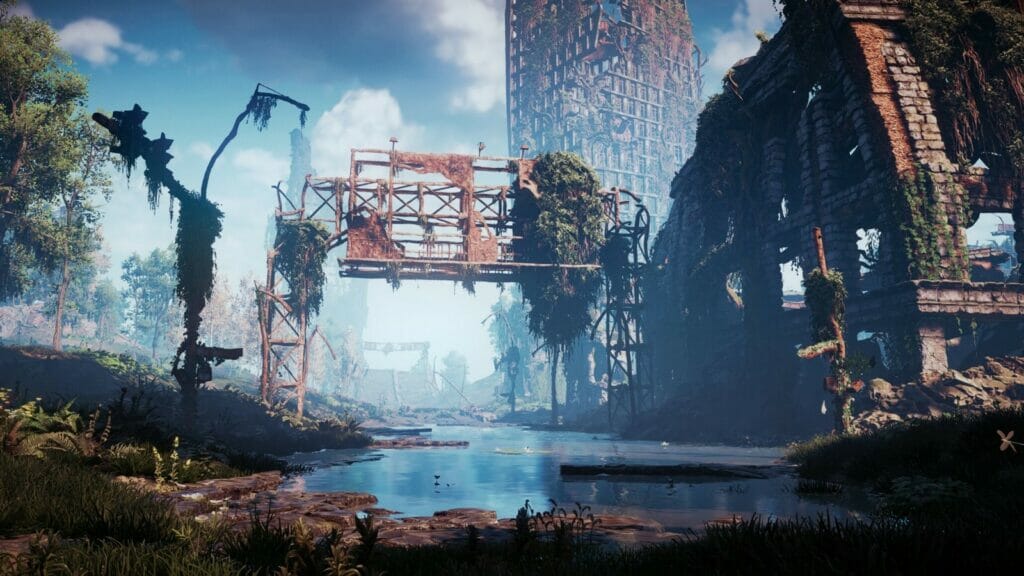
A brilliant screenshot from the Horizon: Zero Dawn video game, everything anybody can expect in a post-apocalyptic landscape is there. It is a barren wasteland where nature has taken over manmade structures. Collapsed roads have turned into ponds, teeming with lilies.
Post-apocalyptic Architecture
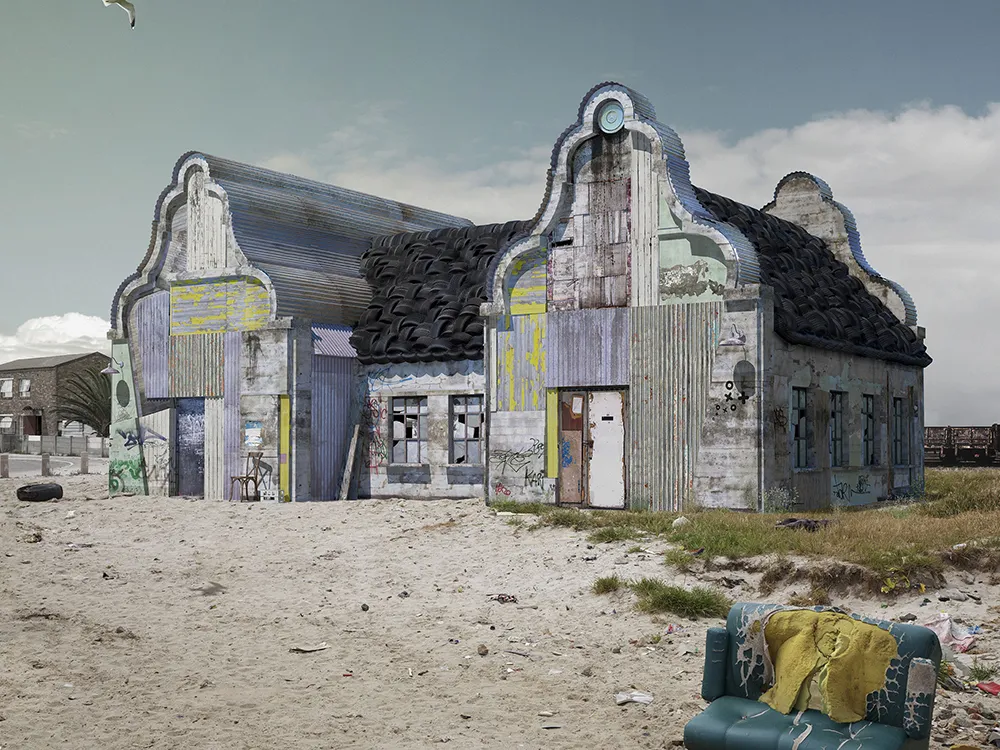
Created by Justin Plunkett out of South Africa, it is an image depicting a rough version of a Dutch-style home. In today’s world, such architecture is considered a sign of prosperity, but the details in the design elements as well as the surrounding environment tell a completely different story. The home is not a mark of wealth, but a remnant of a disappeared civilization in a new post-apocalyptic world.
Alone
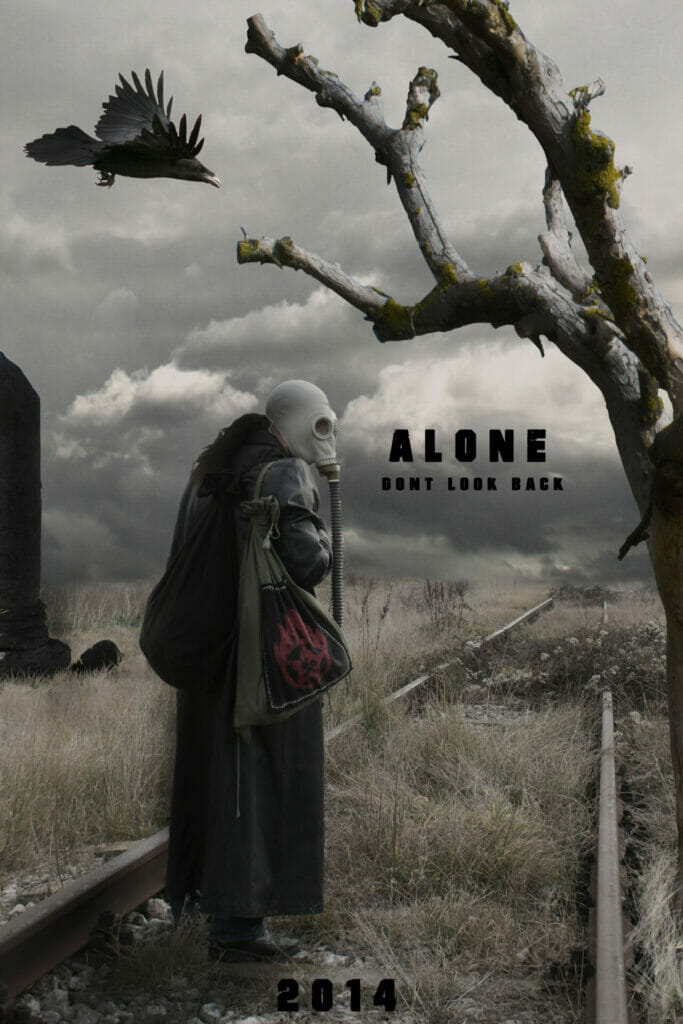
It is not an actual poster of a film, but an imagined version of post-apocalyptic life supposed made into a movie. There is no more public transportation, most people are now dead, and the air pollution has made even the grasses dry out. If you have to go out somewhere, a post-apocalyptic respirator is an indispensable accessory.
We just love apocalyptic art! So much imagination, skill and creativity are needed to produce this type of imagery! Do you have a favorite apocalyptic artist? Is it one of ours or somebody completely different? Let us know. We’d love to hear from you.
If you liked this, then check out Best Books on Post-Apocalyptic Fashion: Dress to Kill or Be Killed!
Other things you might want to know about.
What is the aesthetic of post-apocalyptic?
According to aesthetics.fandom.com some of the key motifs would be destroyed cities, dead foliage, minimal human population.
The key colors would be earth tones, greys, and dull colors.
Key values would be survival, thievery, and gang loyalty.
What is apocalyptic art?
According to google.com artists have depicted the apocalypse with mystery, fantasy, and the ultimate and unimaginable end of the world. This art is sometimes called auto-destructive art.
What makes a good post apocalyptic story?
According to deviantart.com there are 7 tips for writing (and drawing) post-apocalyptic fiction.
Tip 1: There are many different types of Apocalypse.
2: Create a logical connection between the type/strength/timeline of apocalypse and the type of world it creates.
Tip 3: The flavor of your world should be determined by the types of people who survived the apocalypse.
Tip 4: Mix up the type of heroes/anti-heroes in your story.
5: Keep your characters consistent with the time period that they are originally from.
Tip 6: There will be smart and literate people after the apocalypse.
Tip 7: Know that your post-apocalyptic story is an embodiment of how you perceive human nature.
Go to deviantart.com and read more of Desdemona DeBlakes’ article.



